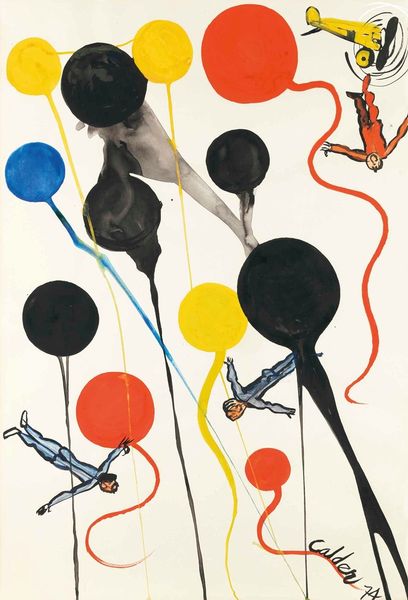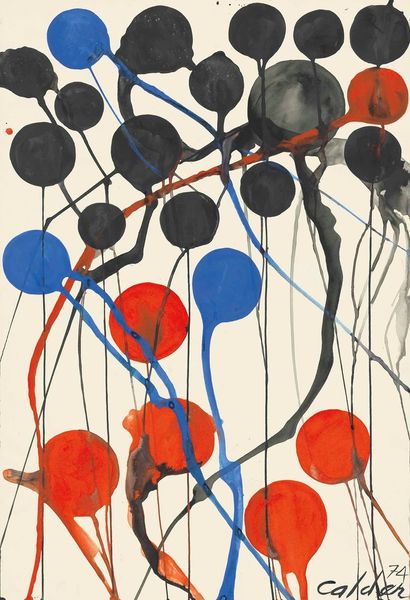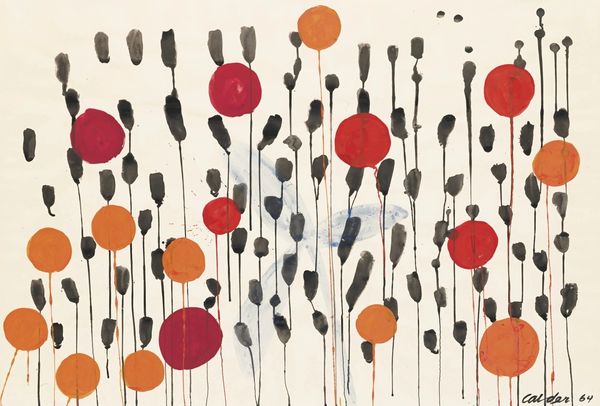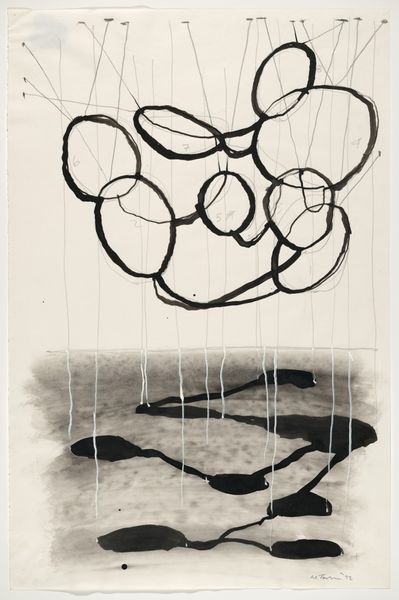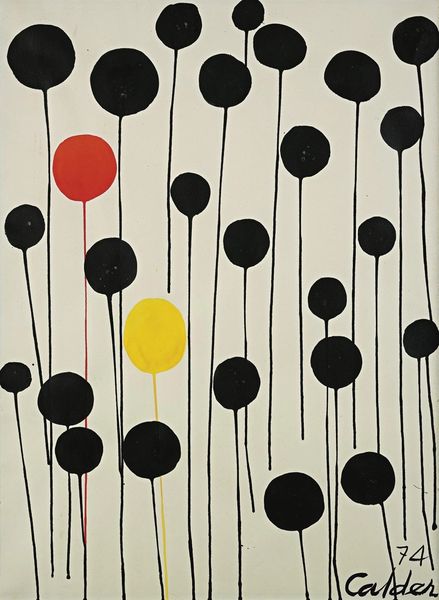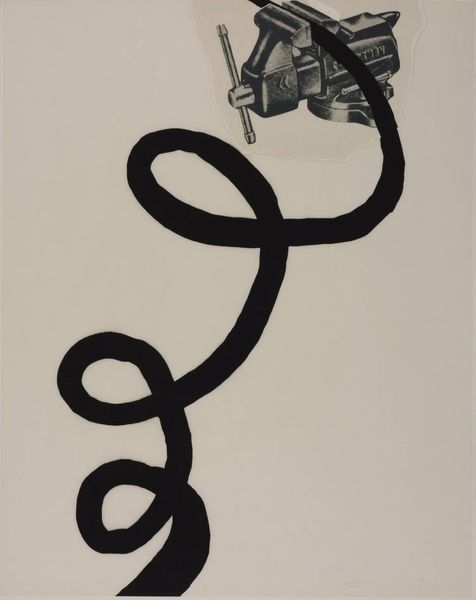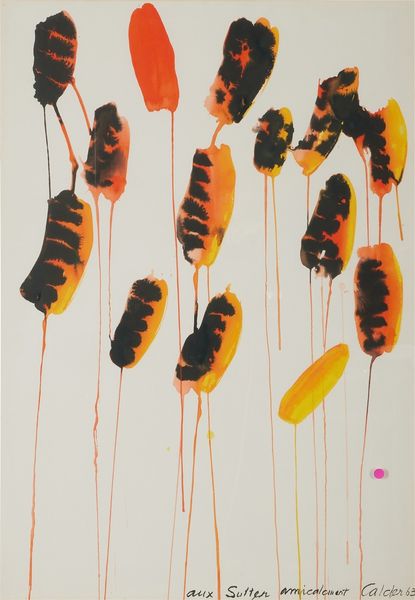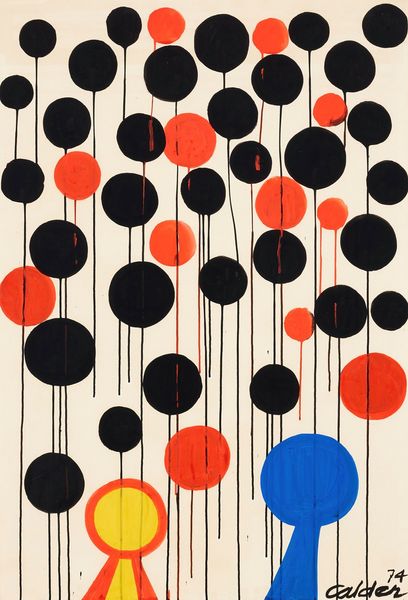
#
stencil art
#
abstract painting
#
teenage art
#
possibly oil pastel
#
abstract
#
fluid art
#
neo expressionist
#
acrylic on canvas
#
spray can art
#
animal drawing portrait
#
expressionist
Copyright: Modern Artists: Artvee
Curator: Alexander Calder’s "Treize Fleurs," executed in 1965, strikes me as both playful and elegantly constructed. Editor: It definitely possesses an airy, almost musical quality, doesn't it? The colours are so striking. Those red blooms leap out from the canvas. Curator: Indeed. Consider Calder's masterful use of line, forming both structure and implying movement. Note how these precisely placed black diagonals interact with these fluid, watercolour-like shapes. They appear to dance on the picture plane. Editor: How does this painting connect to Calder’s larger artistic project, beyond, you know, the obvious aesthetics? Given he’s known for his sculptures, how do you think that informs this flat work? Curator: Precisely! Here the reduction to line and shape can be seen as exploring form in a more purely conceptual way, unburdened by gravity and volume of his more famous mobiles. But this is clearly reminiscent of how line suggests movement and volume in sculpture. Editor: I wonder about the deliberate ambiguity, too. The "thirteen flowers" of the title—are these floral or geometric? Do they exist on one plane? What purpose is the white background to serve? Curator: The interplay is exactly the point. These forms simultaneously exist as abstract entities and suggestive representations of nature. This sort of floating plane creates tension. They exist within Calder's exploration of spatial dynamics and the balance inherent in opposing elements. That white field works in much the same way as empty space functions in one of Calder's more famous, space occupying mobiles. Editor: Thinking about it, Calder also engaged with public works, with all the political and social implications inherent in visibility. A piece like this one, does that legacy also bleed into an ostensibly more simple artwork, maybe reminding the viewer about their place? Curator: The piece invites us to rethink that simplicity. It mirrors back to our perception of the social and political structures, echoing a need for finding lightness within structural composition. Editor: I see what you mean—that maybe there is a place for lightness and visual freedom in everyday, material terms, through things like sculpture and drawings. Curator: Exactly. These “Thirteen Flowers” offer, if anything, a model for that more positive interaction, showing the tension, too, that all things do not merely grow upward. Editor: Well, on my part I did appreciate this insight into the tensions held in those deceptively airy diagonals, and your insights have deepened my understanding of this intriguing visual conversation.
Comments
No comments
Be the first to comment and join the conversation on the ultimate creative platform.

